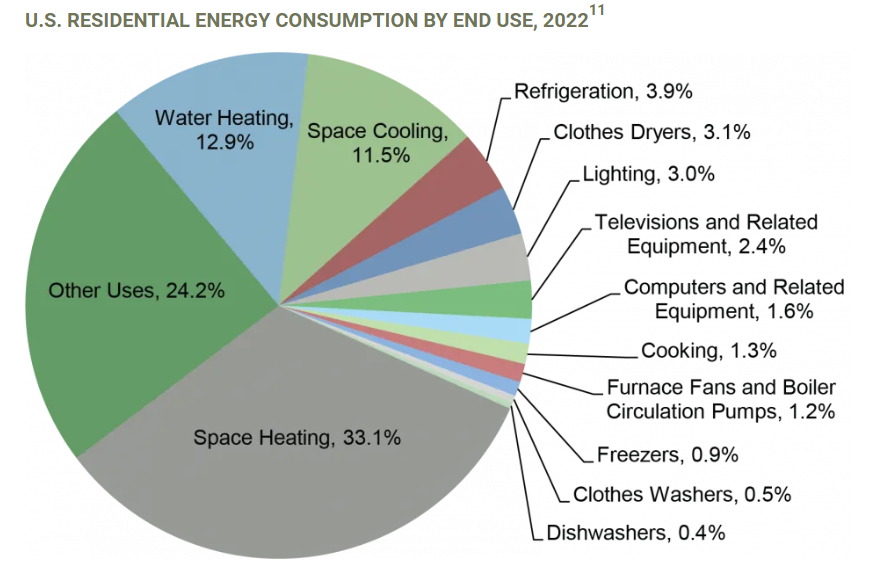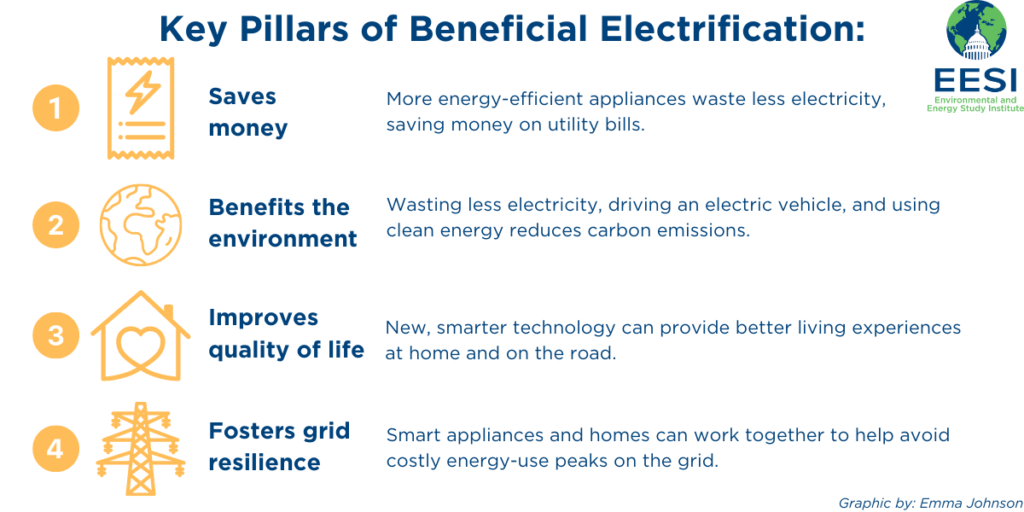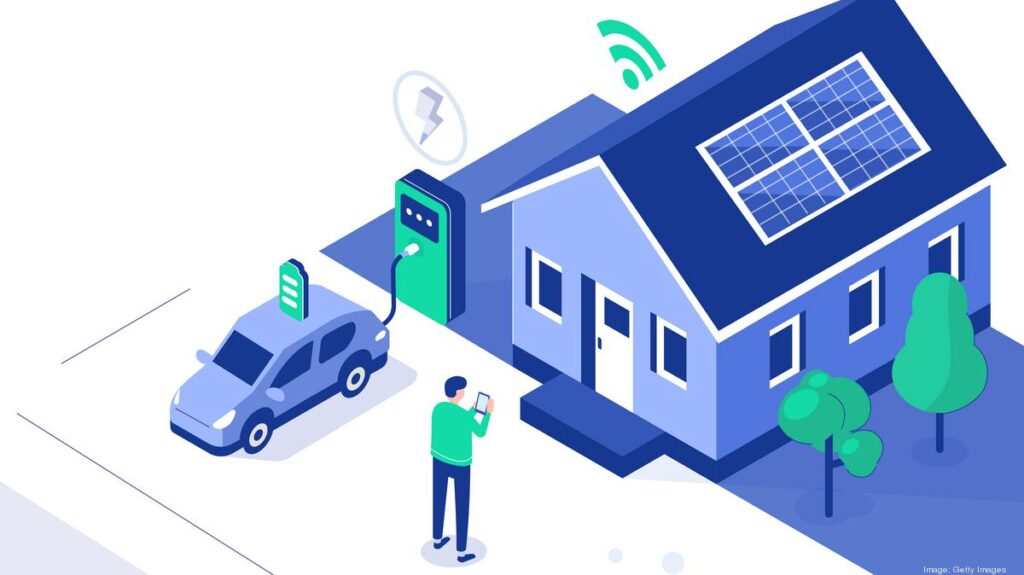Homeownership is a never-ending series of projects and decisions, and even small choices can make massive impacts. That’s why ever since moving in with Christian, I’ve kept my eyes open for opportunities to reduce our energy use (and, ideally, associated costs throughout the house). Many of those changes have been related to reducing our demand, for example the attic weatherization we did three years ago. And last summer I was thrilled to see that insulating and air sealing even part of our house demonstrably dropped our electricity and gas usage. [1]
In trying to reduce our impact on the planet, using less energy in the first place is a great step that often gets overlooked in conversations about fossil fuels vs. renewables. When I worked for an energy efficiency company right out of grad school, we used to remind customers that the cheapest, most efficient kilowatt-hour is the one not used. For that reason, saving energy should always be consideration number one. Consideration number two should then be how we get the energy we do use: our supply.

Using less in the first place and then choosing cleaner energy sources for what you do use go hand-in-hand for reducing your home’s environmental impact.
Image credit: [2]
Consider the Source
Chances are, if you haven’t made any changes to your house since moving in, fossil fuels are still a significant part of how you get your energy, whether you know it or not. In 2022, the residential sector represented more than one fifth of the energy use in the US. [3] More than half of that energy is used heating or cooling our spaces and heating our water, and in many cases (at least around where we live), the appliances that do that work are powered by gas. Gas is also used in homes for cooking (we have an electric range, but our grill outside is hooked up to the gas line) and drying clothes.
The residential sector is the biggest user of electricity in Pennsylvania, with one quarter of our homes heated by electricity instead of gas, but over half of the electricity consumed by Pennsylvanians is created from fossil gas, with another 10 percent still coming from coal. Emissions-free sources, such as nuclear power (still hovering around one third of that mix) and renewables (making up less than 5 percent) are in the distinct minority. [4] What that means is that even if you’re using electricity, you’re still using gas – unless you switch your provider.
The second topic I ever covered on this blog was third-party electricity suppliers, particularly those offering “green” plans. [5] I perseverated over our options for three years after writing that post, feeling pressure to make the “right” decision for us. But after Russia’s invasion of Ukraine in 2022, I quickly chose an electricity supplier for us that would support a transition to renewable energy, rather than enabling our addiction to fossil fuels, and ultimately realizing that whatever decision I made didn’t need to be perfect, but at least needed to be a step in the right direction. [6]

Image credit: [7]
Making the Switch
With one eye focused on ways to use less energy in the first place and the other eye focused on ways to reduce the fossil fuel makeup of the energy we do use, the next step in this story made perfect sense when the opportunity presented itself this past winter. As our gas water heater came to the end of its useful life, we had to make a decision about what would replace it, and that decision was ultimately an electric tankless model. [8] And with that decision made, it was clear that we were about to embark on the long journey of switching our home to electric.
I know a couple of other people who are currently on or have completed this journey. Last year I remember when a colleague proudly announced that he just had the gas company at his house to shut off the service line. At the time I thought it sounded like an extreme move, if not an expensive one. But the idea of “beneficial electrification” is not a new concept. Indeed, for years technology companies have been working toward improvements in energy efficiency, electric appliances, electric vehicles, clean electricity sources, and more agile electricity grids in support of that vision. [9]
The idea of employing various technologies to balance electricity supply and demand, all while wasting less of it and saving money in the process is an exciting one, but there are barriers to entry. Long-term cost savings are a legitimate benefit, but upfront expenses for buying appliances and finding contractors familiar with the equipment can limit adoption. [10] We’re anticipating more expensive hot water once we start using electricity instead of gas (which is a primary reason we’re now buying national wind- and solar-based electricity, which is more affordable for us than the locally generated option). Plus, we noticed there are currently tax credits for installing a gas tankless water heater, but notably not an electric one.

Image credit: [11]
I regularly worry about doing the “right” thing – as do many people I know. It is sometimes hard to know what the “right” thing is in the first place, and even when there is a clear choice, it can be hard to actually do it for any number of reasons – and financial capability is a huge piece. A good place to look if you’re interested in learning more about your options for electrifying your home (including financial incentives) is nonprofit organization Rewiring America. [12]
As I alluded to above with my decision about which third-party electricity supplier to choose, no decision needs to be “perfect,” just better informed. And we’re not in the position to redo our whole house at once – instead, we plan to be replacing gas appliances with electric alternatives as they reach the ends of their useful lives. But in order to do that, the first thing we will need (just to run our new water heater) is an electrical upgrade. And I will be sharing more details about that journey in the weeks and months to come.
~
What do you know (or want to know) about beneficial electrification? Please share your thoughts and questions below, and I’ll incorporate them in future posts as I learn more about this subject myself.
Thanks for reading!
Keep reading about our electrification journey –>
[1] https://radicalmoderate.online/weatherization-update-cost-savings/
[2] https://css.umich.edu/publications/factsheets/built-environment/residential-buildings-factsheet
[3] https://css.umich.edu/publications/factsheets/built-environment/residential-buildings-factsheet
[4] https://www.eia.gov/state/analysis.php?sid=PA
[5] https://radicalmoderate.online/third-party-electricity-suppliers-part-1/
[6] https://radicalmoderate.online/renewable-energy-and-energy-independence-part-1/
[7] https://www.eesi.org/articles/view/presenting-the-beneficial-electrification-toolkit
[8] https://radicalmoderate.online/tankless-water-heater/
[9] https://www.nrdc.org/bio/vignesh-gowrishankar/beneficial-electrification-plug-greener-grid
[12] https://homes.rewiringamerica.org/
0 Comments